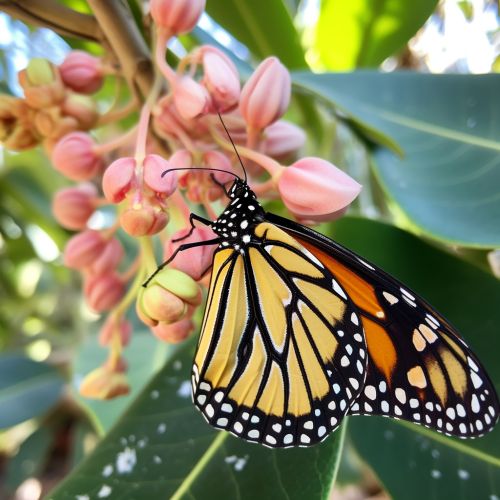Monarch Butterfly
Introduction
The Monarch Butterfly (Danaus plexippus) is a milkweed butterfly (subfamily Danainae) in the family Nymphalidae. It is perhaps the best known of all North American butterflies. The Monarch butterfly exhibits the most highly evolved migration pattern of any known species of butterfly or moth and perhaps any known insect.


Biology and Behavior
Monarchs are known for their long annual migrations. In North America, they travel long distances south in the fall, and north in the spring. Monarch butterflies are not able to survive the cold winters of most of the United States so they migrate south and west each autumn to escape the cold weather. The migration is an example of an insect migration that is driven by seasonal changes.
Monarchs are also known for their distinct orange, black, and white patterned wings. The bright colors of the Monarch butterfly serve as a warning to predators that the butterfly is toxic and distasteful. This phenomenon is known as aposematism.
Life Cycle
The life cycle of the Monarch butterfly has four stages: egg, larva (caterpillar), pupa (chrysalis), and adult. The entire process is known as complete metamorphosis. The Monarch butterfly lays its eggs on the underside of milkweed leaves. These eggs hatch, depending on temperature, in three to five days. The larvae feed on the plant leaves for about two weeks and develop into caterpillars about 2 inches long.
Migration
Monarch butterflies are especially noted for their lengthy annual migration. In North America, they make massive southward migrations starting in August until the first frost. A northward migration takes place in the spring. The Monarch is the only butterfly that migrates both north and south as the birds do on a regular basis. But no single individual makes the entire round trip. Female monarchs deposit eggs for the next generation during these migrations.
Conservation
Monarch butterflies are threatened by habitat loss in both summer and wintering ranges. Pesticide exposure, climate change, and disease also pose threats to the species. Conservation efforts are underway and include habitat restoration, research and monitoring, and education.
